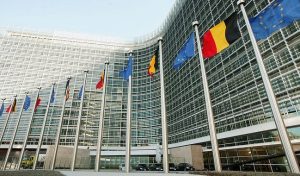For the EU to effectively remove large amounts of CO2 from the atmosphere in the future, it is not only important to develop the technical capabilities but also to have a proper regulatory structure in place.

In a new study, a research team led by PIK Director, Ottmar Edenhofer, presents an economically sound concept for this. A European carbon central bank that is to be established plays a key role in the concept.
The EU has passed far-reaching resolutions for the rapid reduction of greenhouse gas emissions. As in the energy and industry sectors, it will also cap CO2 emissions in the problem sectors of heating and transport from 2027 onwards by means of emissions trading in order to achieve climate neutrality. Unavoidable residual emissions are to be offset primarily by technologies in which CO2 is directly or indirectly removed from the atmosphere and then stored.
“Carbon removal as the second pillar of climate protection will cost us a lot of money in the second half of the century – estimates range from 0.3 to 3 percent of global economic output,” says Ottmar Edenhofer, Director of the Potsdam Institute for Climate Impact Research (PIK) and one of the authors. “We provide a very concrete concept of how this Herculean task can be accomplished.”
Linking EU subsidies to the permanence of CO2 extraction
The study, published in the journal FinanzArchiv, addresses the issue of carbon removal from an economic point of view: Just as regulators make CO2 emissions more expensive in order to limit their negative consequences, they should subsidize CO2 removal.
Max Franks, PIK researcher and co-author of the study, explains: “As a basic principle for cost minimisation, the price for removing and permanently storing one ton of CO2 should be equal to the price for emitting one ton of CO2 into the atmosphere. A notable challenge is addressing the issue of non-permanent CO2 removal, where the greenhouse gas needs to be repeatedly taken out of the atmosphere.”
Seemingly cheap land-based options, such as afforestation or carbon sequestration in farmland, can thus become decisively less attractive compared to, for example, air filter systems with permanent underground storage. Therefore, it seems sensible to initially link EU subsidies to the permanence of extraction (“upstream pricing”), the authors conclude.
Only when CO2 emissions in the land sector have also been comprehensively determined and are subject to pricing can withdrawals be subsidised indiscriminately. The four key levers are quantity control of net emissions, regulation of liability for non-permanent removals, financial support for expansion and innovation of carbon removal, and certification of providers.
For the first two tasks, the study proposes a European Carbon Central Bank, plus two further authorities for financing and quality control. According to the study authors, this proposal would be quite feasible under the current EU political architecture.
